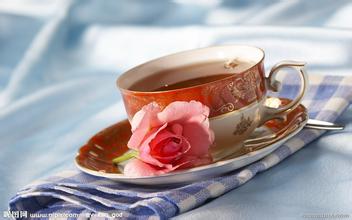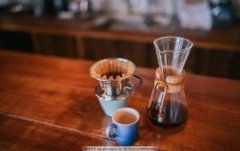A brief introduction to the planting Market Price of Fine Coffee Bean varieties in the fragrant Hassanda Coffee Manor

The Ecuadorian flag is rectangular and has a ratio of length to width of 2:1. The flag consists of three rectangles, yellow, blue and red. Yellow accounts for 1/2 of the flag surface, red and blue each accounts for 1/4. It has a national emblem in the center. Yellow symbolizes the wealth, sunshine and food of the country; blue symbolizes the blue sky, the sea and the magnificent Amazon River; red symbolizes the blood of patriots fighting for freedom and justice. Ecuador has a presidential system. On 26 November 2006, Correa, candidate of the Movement for a Sovereign Fatherland, was elected President in the second round of the presidential election and took office on 15 January 2007. After taking office, he pushed for the convening of a constituent assembly. On April 15, 2007, Ecuador decided to convene a constituent assembly with 81.72% support. In September, Ecuador held elections for delegates to the Constituent Assembly, and the ruling party, the Sovereign Fatherland Alliance, won 61% of the seats. In July 2008, the Constituent Assembly adopted the draft of a new constitution. In September, the new constitution was approved in a referendum with 63.94 per cent support. In October, the new constitution was officially promulgated. In April 2009, Ecuador re-held presidential, parliamentary and local government elections under the new constitution, and Correa was re-elected president. On September 30, 2010, large-scale police protests broke out in Quito, Ecuador's capital, and other major cities in protest against the National Assembly's adoption of the Public Service Law, which contained provisions that cut benefits for police and military personnel. On May 7, 2011, Eritrea held a referendum on ten political and social issues, including judicial reform and media control, and all relevant issues were passed. Since 2012, Ecuador's political situation has remained stable
Arabica coffee trees were first introduced to Ecuador in 1952, and their coffee quality is very good, especially when harvested in early June. Ecuadorian coffee beans can be divided into Galapagos (Galapagos) and Gigante (Gigante) two varieties, both have large particles, heavy portions of characteristics. Ecuadorian coffee can be divided into two types according to quality: No.1 and ExtraSuperior. They are mainly exported to the Nordic countries of Scandinavia. The main problem coffee producers face is trying to maintain consistent quality. The coffee is generally very balanced and refreshing, with a distinctive aroma. Ecuador is one of the few countries in South America that produces both Arabica coffee and Robaik coffee.
But as the land available for arabica coffee trees dwindles, robert coffee production is increasing. The best Arabica coffee is grown in the Andes, especially in the Chanchamgo Valley, which is divided into two mountain ranges extending from south to north to the Galapagos Islands in central Ecuador, located in the Pacific Ocean, about 1,000 kilometers from the coast of Ecuador. The archipelago consists of 13 main islands and a number of islets as well as cays, which cover 8000 square kilometers and are one of the most noble national parks in the world. 97% of the territory belongs to Galapagos National Park, a protected area. UNESCO declared this place a World Natural Heritage Site.
These islands are volcanic formations formed by lava eruptions. Even now, volcanic eruptions continue to shape the geography of the archipelago. The Galapagos Islands are the product of one of the greatest volcanic activity in the world. The climate here is largely influenced by ocean currents, including the Humboldt cold and El Niño warm currents.
Galapagos is rich in species, warm and cold world plants and animals, here is a natural paradise. One of the most famous animals is a prehistoric creature, the giant tortoise, also known as the Galapagos tortoise. The iguana is the only lizard that lives in the sea, along with land lizards and Darwin's finches. Other animals include blue-footed boobies, frigate birds, albatrosses, penguins that live only in hot water, cormorants, and sea lions.
Galapagos coffee is very rare due to the limited arable land available locally. Since Manuel J. Cobos first cultivated coffee here in the late 19th century, the coffee seeds here have never been crossed or changed. Galapagos coffee is considered one of the purest Arabica beans in the world. Galapagos coffee is of exceptional quality, grown in fertile volcanic soils and rich in minerals such as phosphorus. Coffee cultivation is not affected by any chemical substances Arabica trees were first introduced to Ecuador in 1952 and the coffee quality is very good, especially when harvested in early June. Ecuadorian coffee beans can be divided into Galapagos (Galapagos) and Gigante (Gigante) two varieties, both have large particles, heavy portions of characteristics. Ecuadorian coffee can be divided into two types according to quality: No.1 and ExtraSuperior. They are mainly exported to the Nordic countries of Scandinavia.
The main problem coffee producers face is trying to maintain consistent quality. The coffee is generally very balanced and refreshing, with a distinctive aroma.
Ecuador is one of the few countries in South America that produces both Arabica coffee and Robaik coffee. But as the land available for arabica coffee trees dwindles, robert coffee production is increasing. The best Arabica coffee is grown in the Andes, especially in the Chanchamgo Valley, which divides into two mountain ranges extending from south to north into central Ecuador
The Galapagos Islands are located in the Pacific Ocean, about 1,000 kilometers from the coast of Ecuador. The archipelago consists of 13 main islands and a number of islets as well as cays, which cover 8000 square kilometers and are one of the most noble national parks in the world. 97% of the territory belongs to Galapagos National Park, a protected area. UNESCO declared this place a World Natural Heritage Site.
These islands are volcanic formations formed by lava eruptions. Even now, volcanic eruptions continue to shape the geography of the archipelago. The Galapagos Islands are the product of one of the greatest volcanic activity in the world. The climate here is largely influenced by ocean currents, including the Humboldt cold and El Nino warm currents.
Galapagos is rich in species, warm and cold world plants and animals, here is a natural paradise. One of the most famous animals is a prehistoric creature, the giant tortoise, also known as the Galapagos tortoise. The iguana is the only lizard that lives in the sea, along with land lizards and Darwin's finches. Other animals include blue-footed boobies, frigate birds, albatrosses, penguins that live only in hot water, cormorants, and sea lions.
Galapagos coffee is very rare due to the limited arable land available locally. Since Manuel J. Cobos first cultivated coffee here in the late 19th century, the coffee seeds here have never been crossed or changed. Galapagos coffee is considered one of the purest Arabica beans in the world. Galapagos coffee is of exceptional quality, grown in fertile volcanic soils and rich in minerals such as phosphorus. Coffee cultivation is not affected by any chemicals Chimborazo is located in the western Cordillera Mountains of the Andes and has long been mistaken for the highest peak of the Andes. It is a dormant volcano, with many craters, glaciers on the top of the mountain, about 4694 meters above, snow all the year round. Port Guayaquil is Ecuador's largest seaport. It faces the Pacific Ocean and backs to Mount Santa Ana. The nearby island of Pune serves as a natural barrier to protect the harbour from storms. There is a dock to the south, more than 900 meters long. In the harbor, ships from different parts of the world are moored, flying various flags. The port railway leads to Quito, the capital, and a series of highways connect Quito with other cities in the country. Bananas, cocoa, coffee, cotton and other products from all over the country are collected and distributed here. Guayaquil also played an important role in the history of friendly exchanges between the peoples of China and Ecuador. As early as the 18th century, Chinese clothing, textiles and other goods were transported to Ecuadorian cities through Guayaquil. In August 1978, the Chinese freighter Jialing River arrived here for the first time. Most of the imported and exported goods of the two countries are also Ecuador's national emblem, which was used in 1900 and is similar to the national emblem of Colombia. A fierce "American Condor" vulture spreads its wings above the national emblem. It is Ecuador's national bird, symbolizing sovereignty and independence. Ecuador's national emblem has a unique design concept, fully demonstrating the national flavor: Ecuador's highest peak, Chimborazo Mountain, is covered with snow. Against the blue sky, it stands towering on the Pacific coast. The trees at the foot of the mountain are verdant. A big river winds out from the depths of the mountains and gradually flows into the blue sea. An Ecuadorian pride in South America's first steam ocean liner lies at sea
Important Notice :
前街咖啡 FrontStreet Coffee has moved to new addredd:
FrontStreet Coffee Address: 315,Donghua East Road,GuangZhou
Tel:020 38364473
- Prev

A balanced and refreshing Hasenda Coffee Estate Boutique Coffee Bean Origin Development History Culture Introduction
Arabica coffee trees were first introduced to Ecuador in 1952, and their coffee quality is very good, especially when harvested in early June. Ecuadorian coffee beans can be divided into Galapagos (Galapagos) and Gigante (Gigante) two varieties, both have large particles, heavy portions of characteristics. Ecuadorian coffee can be divided into No.1 and ExtraSuperior according to quality.
- Next

Moderate full-bodied Hazenda Coffee Estate Fine Coffee Bean Planting Location Climate Elevation Simple
There is a dock to the south, more than 900 meters long. In the harbor, ships from different parts of the world are moored, flying various flags. The port railway leads to Quito, the capital, and a series of highways connect Quito with other cities in the country. Bananas, cocoa, coffee, cotton and other products from all over the country are collected and distributed here. In the history of friendly exchanges between the peoples of China and Ecuador,
Related
- Does Rose Summer choose Blue, Green or Red? Detailed explanation of Rose Summer Coffee plots and Classification in Panamanian Jade Manor
- What is the difference between the origin, producing area, processing plant, cooperative and manor of coffee beans?
- How fine does the espresso powder fit? how to grind the espresso?
- Sca coffee roasting degree color card coffee roasting degree 8 roasting color values what do you mean?
- The practice of lattes: how to make lattes at home
- Introduction to Indonesian Fine Coffee beans-- Java Coffee producing area of Indonesian Arabica Coffee
- How much will the flavor of light and medium roasted rose summer be expressed? What baking level is rose summer suitable for?
- Introduction to the characteristics of washing, sun-drying or wet-planing coffee commonly used in Mantenin, Indonesia
- Price characteristics of Arabica Coffee Bean Starbucks introduction to Manning Coffee Bean Taste producing area Variety Manor
- What is the authentic Yega flavor? What are the flavor characteristics of the really excellent Yejasuffi coffee beans?

